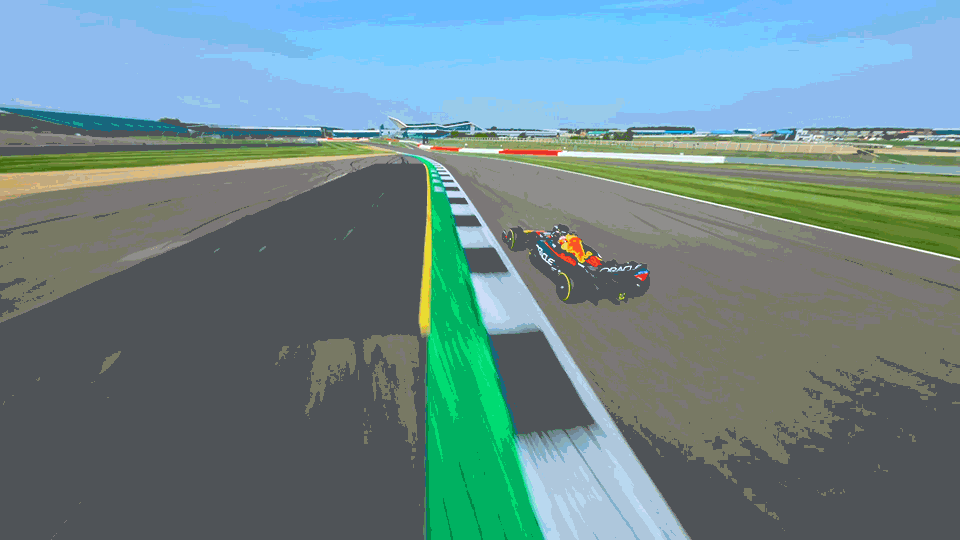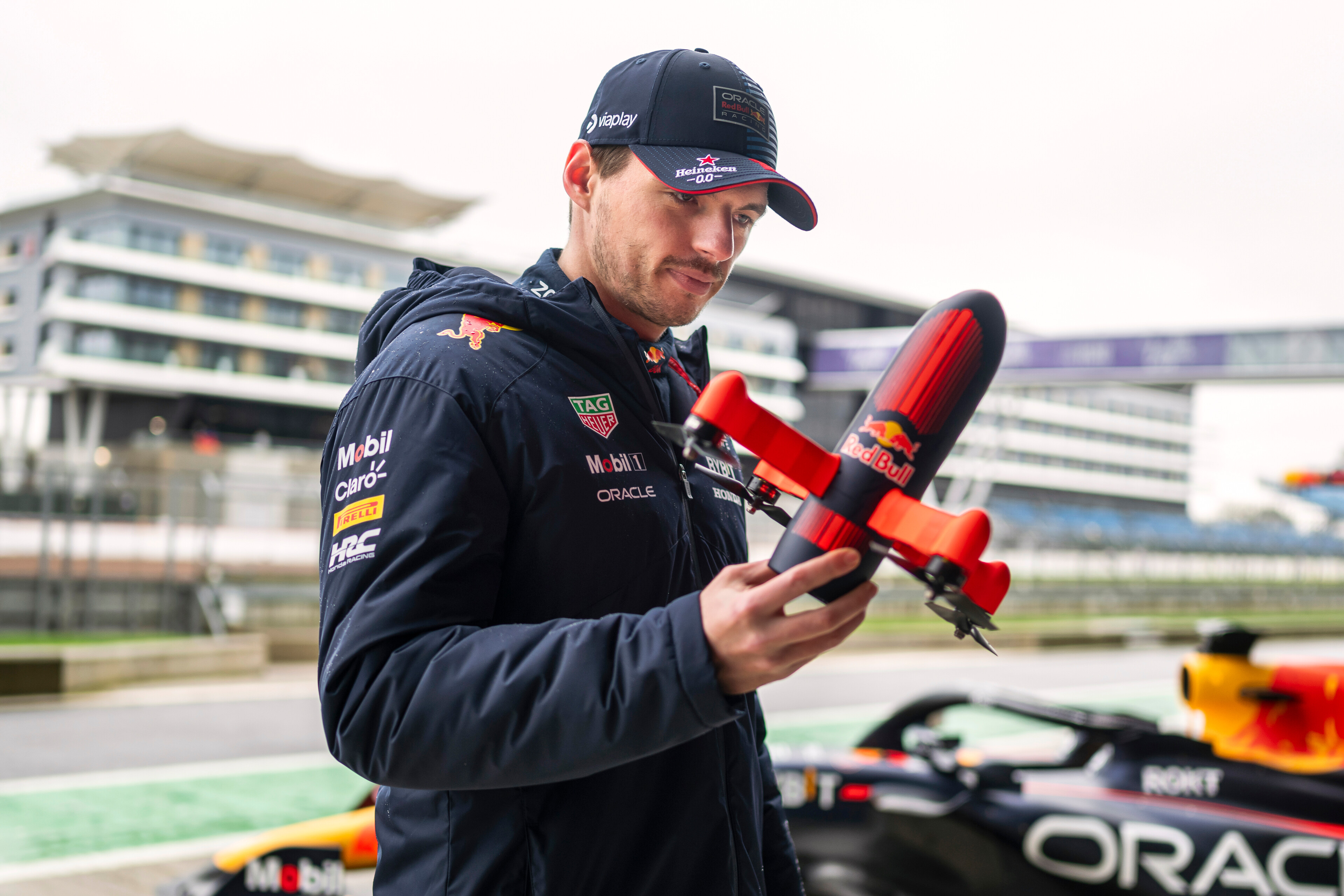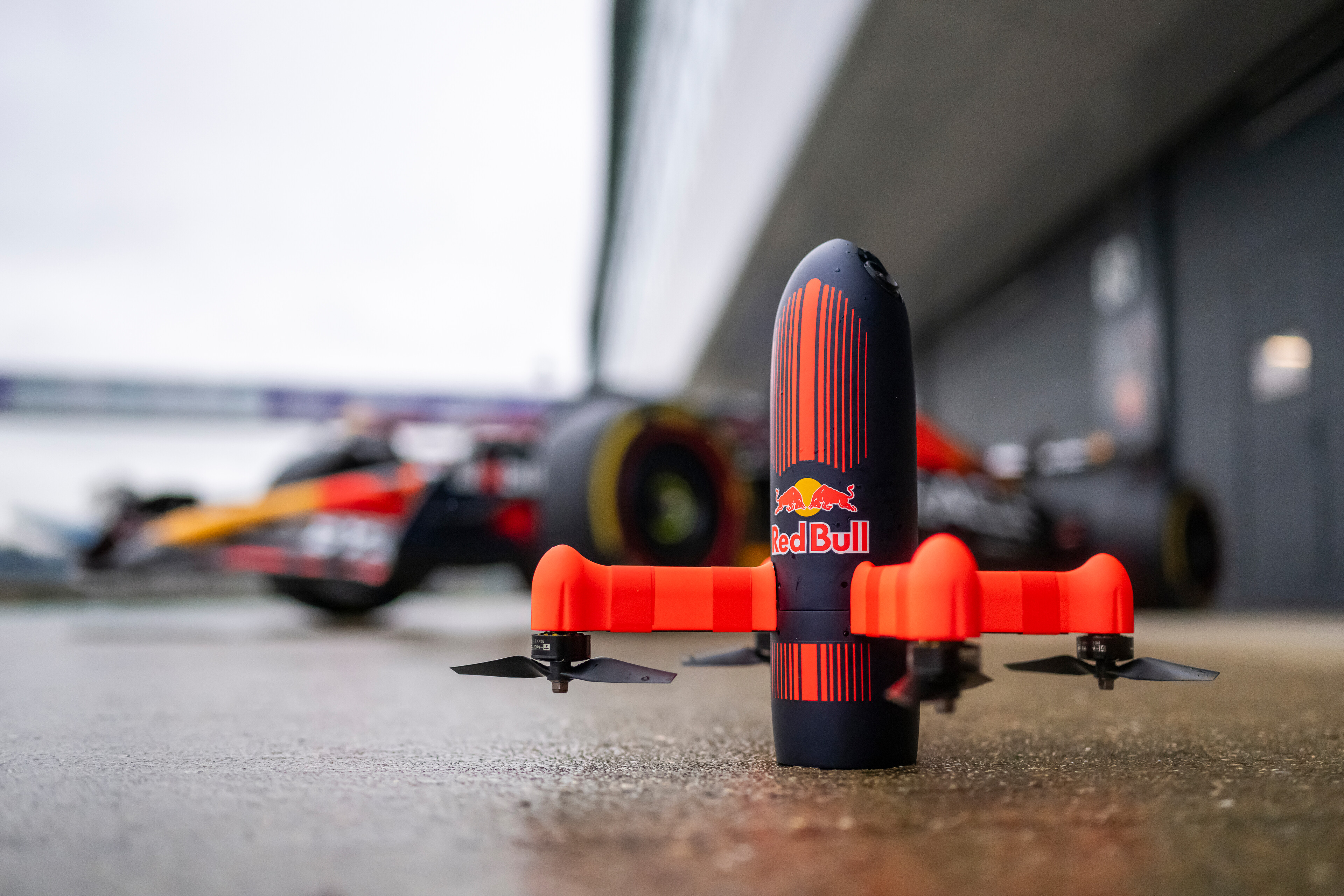World's fastest camera drone "Was a gamble" but might change F1 coverage
New drone can keep up with the world's fastest man, at least for one lap of Silverstone; now FPV motorsport coverage awaits

The team known as the Dutch Drone Gods took on – and succeeded – with a goal set for them by Red Bull Advanced Technologies; to capture Max Verstappen driving a full lap of the legendary Silverstone Grand Prix circuit in his Red Bull F1 racing car.
Dutch-Belgian driver Verstappen is currently leading the famous racing standings (though by the time I finish writing this he might have signed for Mercedes)! F1 cars travel at over 300kph (186mph) taking exciting turns, which is what made keeping up with the car for a whole lap with an FPV drone such a challenge, but a potentially rewarding one...
The pilot, Shaggy FPV (or Ralph Hogenbirk), played a significant part in designing the unique-looking craft, seen below in the hands of Max Verstappen himself. It has propulsion systems that surpass conventional models for a sustained period, boasting enhanced power and responsiveness. Motor power, RPM configuration, propeller size, and battery specifications were fine-tuned for speed, efficiency, and aerodynamics.
Asked about the process, Shaggy FPV acknowledges that he'd already come a long way from tinkering in his garage by the time Red Bull approached him, but nevertheless he felt "We didn't really know if it was going to work. So, we said to ourselves, ‘Let's just try and see what we can come up with, and see if it will even perform close to the way we need it to succeed in this project.’ It was a big gamble."
The final form seen in the video took several prototypes and about ten months work, and no concept was dismissed as too wacky. Bullet-shaped and rocket shapes were looked at, but as FPV pilots the team wanted the ability to make turns. (This is F1, not speedway!)
The unusual design isn't a million miles from an FPV quadcopter with powerful motors; the rocket-like fuselage provides aerodynamic support to lean over nearly sideways and keep pace with (so film) cars which pull G forces of around 5 Gs in corners.
Asked what the main limitation is, Shaggy said "The most limiting aspect, technology-wise, remains the batteries. Specifically with this drone, we place significant demands on the batteries. They have to be quite big, heavy and high-quality to deliver the power when needed, such as during full-speed stretches where the drone reaches speeds exceeding 300 kilometres per hour for several seconds on straightaways, then quickly decelerates and recovers to deliver power again on the next straightaway. Currently, there is no battery capable of delivering such power while also offering extensive endurance. It's a case of 'either-or'."
The best camera deals, reviews, product advice, and unmissable photography news, direct to your inbox!
I can imagine a lot of FPV pilots sympathise.
See our guide to choosing the best FPV drone.

With over 20 years of expertise as a tech journalist, Adam brings a wealth of knowledge across a vast number of product categories, including timelapse cameras, home security cameras, NVR cameras, photography books, webcams, 3D printers and 3D scanners, borescopes, radar detectors… and, above all, drones.
Adam is our resident expert on all aspects of camera drones and drone photography, from buying guides on the best choices for aerial photographers of all ability levels to the latest rules and regulations on piloting drones.
He is the author of a number of books including The Complete Guide to Drones, The Smart Smart Home Handbook, 101 Tips for DSLR Video and The Drone Pilot's Handbook.


